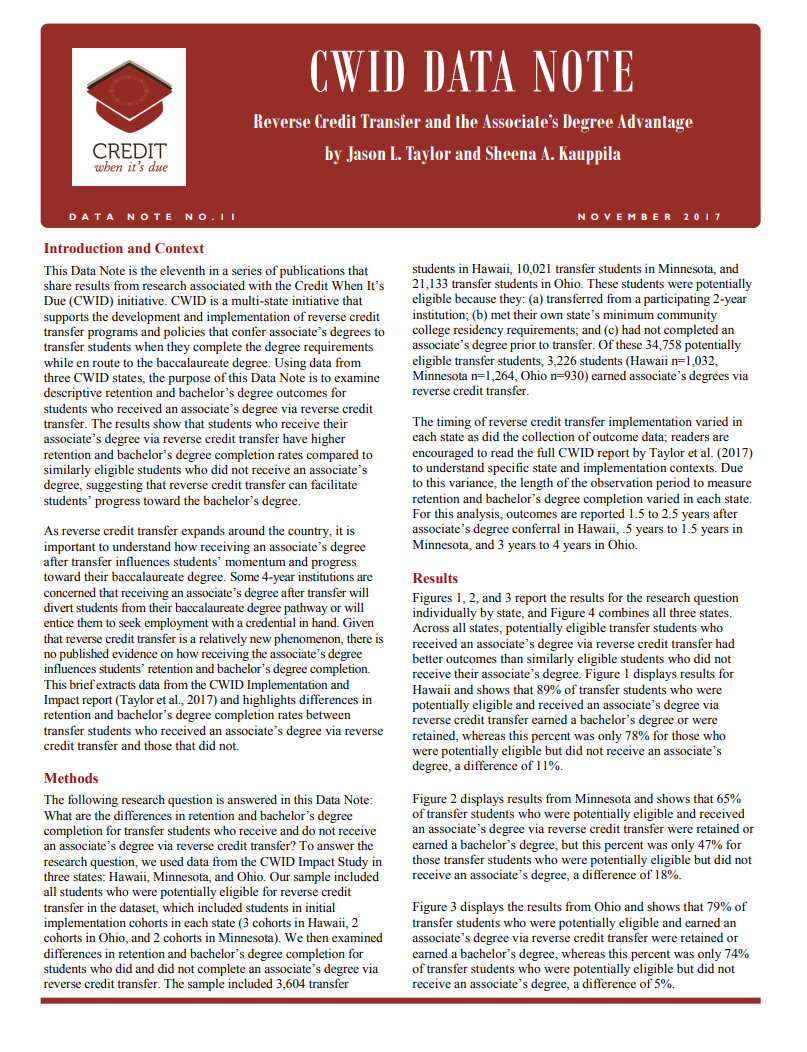CWID Data Note: Reverse Credit Transfer and the Associate’s Degree Advantage
Author(s): Jason L. Taylor, Sheena A. Kauppila
Publisher: Community College Research Initiatives (CCRI), University of Washington
Year: 2017
Description
This Data Note is the eleventh in a series of publications that share results from research associated with the Credit When It’s Due (CWID) initiative. CWID is a multi-state initiative that supports the development and implementation of reverse credit transfer programs and policies that confer associate’s degrees to transfer students when they complete the degree requirements while en route to the baccalaureate degree. Using data from three CWID states, the purpose of this Data Note is to examine descriptive retention and bachelor’s degree outcomes for students who received an associate’s degree via reverse credit transfer. The results show that students who receive their associate’s degree via reverse credit transfer have higher retention and bachelor’s degree completion rates compared to similarly eligible students who did not receive an associate’s degree, suggesting that reverse credit transfer can facilitate students’ progress toward the bachelor’s degree.
As reverse credit transfer expands around the country, it is important to understand how receiving an associate’s degree after transfer influences students’ momentum and progress toward their baccalaureate degree. Some 4-year institutions are concerned that receiving an associate’s degree after transfer will divert students from their baccalaureate degree pathway or will entice them to seek employment with a credential in hand. Given that reverse credit transfer is a relatively new phenomenon, there is no published evidence on how receiving the associate’s degree influences students’ retention and bachelor’s degree completion. This brief extracts data from the CWID Implementation and Impact report (Taylor et al., 2017) and highlights differences in retention and bachelor’s degree completion rates between transfer students who received an associate’s degree via reverse credit transfer and those that did not.

